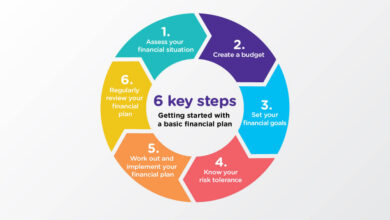How to Conduct a Profit and Loss Statement Analysis

Understanding the nuances of a Profit and Loss (P&L) statement is crucial for anyone keen on grasping a business’s financial well-being. For many business owners, making sense of these financial documents can often feel like deciphering a foreign language. What’s even more challenging is using this data effectively to drive strategic decisions.
This blog delves into comprehending P&L statements, covering everything from the definition, key elements like revenue, expenses, and net income, to more intricate details such as accounting methods and profitability evaluation. Arm yourselves with insights that guide you in performing thorough business analysis, ensuring more informed financial decision-making.
Understand the Basics of a P&L Statement
People often refer to a profit and loss analysis as an income statement or P&L, which is more than just a collection of numbers. It is an essential tool that provides a snapshot of a business’s financial health over a particular period, whether that’s a month, a quarter, or a year. This statement answers the fundamental question: Is the business making money or losing it?
Definition and Purpose of a Profit and Loss Statement
The main purpose of a P&L statement is to determine the net profit or loss of a business. This helps stakeholders understand financial trends and assess the overall viability of the business. It plays a crucial role in strategic decision-making by providing clarity and insight into the financial operations of a company.
Key Components: Revenue, Expenses, Net Income
Every P&L statement revolves around three primary elements: revenue, expenses, and net income.
- Revenue : Often referred to as the ‘top line’, revenue is the core of any business’s financial activities. It represents the total amount of money the company brings in from various sources, such as sales, interest, royalties, and subscriptions. Importantly, this includes both paid and unpaid invoices.
- Expenses : Expenses denote the outflow of money aimed at generating revenue. These include the cost of goods sold (COGS), which covers direct costs such as materials and labor necessary for creating products or services, as well as operating, non-operating, and capital expenses.
- Net Income : The ‘bottom line’, or net income, is the figure that signifies whether the business ended up in profit or loss after subtracting total expenses from total revenue. This is calculated using the formula: Net income = Revenue – Expenses + Gains – Losses. Understanding this gives a clear picture of the business’s financial outcome over the covered period.
By grasping how these fundamental elements interact, business owners and their teams can maintain a keen awareness of their financial condition, supporting them in making informed strategic choices. For those eager to dig deeper into understanding these financial documents, you can explore numerous online resources such as discussions on
Accounting Methods
When diving into the world of a Profit and Loss statement, it’s vital to understand the method of accounting being used, as it directly shapes the way financial transactions are documented. At the core, there are two main methods that businesses use: cash basis accounting and accrual basis accounting.
Explanation of Cash Basis Accounting: Revenue and expenses recognized when cash is exchanged
In cash basis accounting, businesses keep things straightforward. Transactions are recorded only when cash actually changes hands, making it one of the simplest ways to maintain financial records. Revenue is acknowledged only when it’s received as cash from customers, and expenses are recorded when they’re paid out. This clean and uncomplicated approach is quite beneficial for small businesses and individuals who want an unfussy view of their cash flow without worrying about pending invoices or future liabilities.
Explanation of Accrual Basis Accounting: Revenue recognized when earned, expenses when incurred
Accrual basis accounting, on the flip side, paints a comprehensive picture of a business’s financial well-being by focusing on the timing of transactions. Revenue is recognized as soon as it’s earned, not necessarily when the payment comes in. This could be right after delivering a service or shipping a product. Similarly, expenses are noted when they happen, not when they’re paid. This method aligns income with its associated expenses within the correct time frame, providing businesses a better reflection of their financial health. It’s especially preferred by larger companies and often mandated by Generally Accepted Accounting Principles (GAAP) for official financial reporting.
Grasping these accounting methods significantly improves financial statement analysis. A P&L statement under cash basis might spotlight liquidity, whereas accrual basis gives insight into long-term profitability and fiscal stability.
Dissecting Sales Performance and Revenue Streams
In this section, we’ll explore the fundamental components of a Profit and Loss (P&L) statement to better assess a business’s financial status and operational performance.
Sales: Importance of reviewing sales performance and seasonal effects
Understanding sales performance is a crucial aspect of P&L analysis, as it provides direct insight into a company’s revenue generation capacity. It’s essential to distinguish between operational revenue, which comes from the core activities like selling products or services, and non-operational revenue, such as gains from asset sales or investment interest. This distinction helps in identifying the sustainable revenue streams and enables better strategic decisions.
Note that any adjustments for expected returns should be incorporated, converting gross sales into net sales, thus providing a clearer picture of the company’s actual revenue.
Sources of Income: Evaluating profitability and time investment
An analysis of the various sources of income considering profitability and time investment can reveal the most efficient revenue streams. This insight is invaluable for strategic planning, helping businesses identify where they can gain a competitive edge or which segments are consuming excess time relative to their profitability.
Cost of Goods Sold: Analyzing expenses directly related to products
The analysis of the Cost of Goods Sold (COGS) is another vital part of P&L analysis, as it comprises direct costs like materials, labor, and overhead associated with the production of goods or services. Understanding COGS is crucial for calculating gross profit, which is simply revenue minus COGS. Businesses can improve their gross profit margin by identifying and reducing unnecessary expenses within COGS.
Moreover, understanding sales trends and implementing horizontal analysis help businesses efficiently plan for seasonal fluctuations, optimizing inventory and staffing decisions.
Analyzing Operating and Financial Expenses
When dissecting a profit and loss statement, a thorough analysis of operating and financial expenses is vital to understanding a company’s financial health.
Operating Expenses: Day-to-day operational costs
Operating expenses account for the day-to-day costs essential to running a business. These include salaries, rent, utilities, marketing, and maintenance. They appear on the income statement after sales or revenue and are a critical component of calculating operating income. An important tool here is the operating expense ratio, which compares total operating expenses to total revenue. A lower ratio suggests effective cost management, a sign of operational efficiency.
Depreciation & Amortization: Understanding asset cost spreading
A unique aspect of operating expenses is depreciation and amortization, which involve spreading the cost of assets over their useful lives. Depreciation pertains to tangible assets like machinery, while amortization is for intangible assets such as patents. Both represent non-cash expenses; though they don’t directly affect cash flow, they reduce asset values on the balance sheet. Businesses can use these deductions to lower taxable income and potentially benefit from tax advantages.
Interest Expense: Costs of borrowing
Non-operating expenses, though not directly tied to core business functions, can substantially influence profitability. Prominent among these is interest expense, denoting the cost of borrowed funds. On the income statement, interest expenses fall under the non-operating section and can provide insights into a company’s leverage and financial obligations. A high interest expense may indicate significant debt, with potential ramifications for financial health. To gauge the company’s capacity to handle its debts, one can analyze the interest coverage ratio. When the ratio is higher, it indicates a strong ability to meet interest obligations, thus reducing default risk.
Comparing financial metrics with industry benchmarks helps identify expense management success and optimization opportunities through cost allocation strategies. Examine operating and financial expenses to identify inefficiencies and strengthen fiscal health.
Net Income: Significance for Business Sustainability
Evaluating the profitability of a business starts by understanding the net income, which is the bottom line reflecting the company’s ability to generate profit over the long term. It’s not just about subtracting expenses from revenue but getting a complete picture of financial activities, including occasional gains or losses from asset sales and non-operating activities, which can influence this key metric.
Net Income as Profit Margin: Calculation and Industry Comparison
Net income is crucial not only for business owners but also for various stakeholders like investors, lenders, and regulatory bodies which use the Profit and Loss (P&L) statement as a tool to assess a company’s financial health and potential for growth. A positive, encouraging net income shows that a company can repay loans and make smart decisions when accessing capital or getting better financing terms.
Calculating net income is straightforward: start with total revenue and subtract the costs of goods sold (COGS), operating expenses, taxes, and any other costs. Once you have the net income, you can determine the net income margin by dividing net income by total revenue, then converting it to a percentage. This percentage helps businesses see how their profitability stacks up against industry peers. For instance, a study done by Bain & Company and EcoVadis found that companies where employees are highly satisfied had a net income margin of 16%, compared to just 10% in less satisfied firms. This highlights how managing employee satisfaction can significantly impact a company’s profitability.
Understanding the net income offers insights into financial pathways a company might explore, such as making new investments, expanding operations, or distributing dividends. For accurate calculations of net income and profit margins, an accurate and exhaustive itemization of all associated costs is essential. Furthermore, sustainability practices can boost net income margins, with high ESG ratings offering benefits like lower debt costs and enhanced market performance. For more insights on organizational stability and its effects on profitability, you can refer to Smith’s website on governance structures (source: [Smith Web](https://smithweb.com/company/structure-and-finance/)).
Conducting In-depth P&L Analysis
In analyzing a Profit and Loss (P&L) statement, focusing on net revenue and optimizing profit margins is paramount. By understanding these elements, businesses can ensure their long-term sustainability.
– Examining Revenue Trends
Start by scrutinizing the revenue trends from all income sources. Break down the revenue by individual products or services to pinpoint which offerings are most lucrative. A detailed analysis here helps track changes over time, allowing businesses to identify consistent growth patterns or areas of decline.
– Optimizing Profit Margins
To enhance profitability, consider modifying pricing strategies. However, do this judiciously, as altering prices can impact demand, especially with products that have high price elasticity. Additionally, reducing production costs through efficiency improvements, cheaper raw materials, technology integration, or strategic outsourcing can boost margins.
Sustainability of Revenue
Compare current revenues against past performances to recognize ongoing trends in growth or decline. This understanding will highlight underlying factors affecting revenue sustainability. Additionally, discerning specific customer segments that significantly contribute to sales enables more directed and effective marketing initiatives.
– Improvement of Operational Efficiencies
Operational efficiency is another pillar of profit optimization. Supply chain improvements, better inventory management, and administrative process streamlining contribute to enhanced operations. Implementing operations management software can minimize waste and elevate productivity.
– Controlling Expenses
It is essential to compare expense growth against revenue increments. For example, a 20% revenue increase coupled with a 60% rise in operational expenses requires examining cost control measures more closely. Identifying inefficient processes and adopting methodologies like lean manufacturing or Six Sigma can help eliminate unnecessary costs.
– Mitigating Revenue Concentration Risks
Evaluate revenue concentration risks by analyzing dependency on a select few major customers or a single product line. Diversifying revenue streams will shield the business if a large customer exits or product demand declines.
Finally, automated technology and specialized software can greatly reduce costs. Implementing ERP systems, manufacturing automation, and utilizing AI for predictive maintenance can significantly lower operational expenses. Effective supplier negotiations and vendor management can also result in cost efficiencies without compromising quality. Additionally, fostering an environment of employee productivity through training can minimize labor costs, ultimately improving profit margins.
For comprehensive strategies on managing a P&L statement, review discussions on platforms like [this Reddit thread](https://www.reddit.com/r/smallbusiness/comments/mj7wom/is_there_a_place_to_find_a_profit_loss_statement/).
Comparative P&L Evaluation
Delving into comparative analysis involves two main types of evaluations: benchmarking against industry peers and assessing financial performance over time.
Benchmarking against Industry Peers
When you benchmark your P&L statement against industry standards, you uncover insights about your company’s performance relative to others. Start by comparing your company’s net income margins and expense ratios with industry norms. It’s particularly illuminating to note discrepancies, such as a net income margin that lags behind the industry average, which might point to operational inefficiencies. Industry reports, such as those from IBISWorld or NAICS, can supply valuable benchmarks, providing a broader perspective against which individual company performance can be judged.
To ensure your benchmarking is effective, select peers that align closely with your company in terms of size and business segment. A relevant example might include comparing a company like Smith, known for its global reach and significant annual revenues, which can serve as a robust benchmark. [Smith Web](https://smithweb.com/company/structure-and-finance/)
Assessing Financial Performance Over Time
Understanding the financial performance of your company against past periods can offer an important perspective for growth and sustainability. A comparative income statement, which juxtaposes financial data from different accounting periods, provides insights into trends in revenue, expenses, and profitability. With this tool, it’s possible to spot patterns or irregularities that might indicate seasonal trends or other important financial fluctuations.
Tools such as horizontal and vertical analysis complement this by offering deeper dives into the data. Horizontal analysis aids in tracking the movement of line items over consecutive periods, highlighting growth or shrinkage. Vertical analysis, meanwhile, gauges the relative weight of line items as percentages of a base figure, usually total revenue, providing an immediate sense of proportionality and balance.
Tracking KPIs like gross margin ratio and return on equity offers further insights into your company’s financial well-being, guiding you toward more strategic decisions. The discussions on Reddit confirm the importance of these processes, underscoring their value in decision-making. [Reddit](https://www.reddit.com/r/explainlikeimfive/comments/asvpoe/eli5_how_a_companys_pl_balance_sheet_and_cash/)
Completed analysis can lay the foundations for strategic choices. For instance, noticing a consistent dip in a specific revenue stream might signal the need for diversification, or spotting rising operational costs might trigger initiatives for cost-cutting. Through diligent comparative analysis, companies can not only refine their internal processes but also enhance their market presence.
Leveraging P&L Analysis for Business Strategy
Regular profit and loss (P&L) analysis is not just an accounting exercise; it is a critical tool for shaping the future success of any business. By routinely examining P&L statements, businesses can identify areas where they can cut costs, improve efficiencies, and ultimately enhance profitability.
Moreover, the insights gained from these analyses empower businesses to make informed, data-driven decisions. With a clear understanding of revenue streams and cost structures, companies can strategically allocate resources towards profitable ventures and shed those that don’t contribute to growth.
In a rapidly changing market landscape, being able to adapt quickly is a vital advantage. Regular P&L analysis provides the foresight needed to navigate future challenges and seize new opportunities. It ensures that businesses are agile, equipped to make strategic changes, and set realistic growth targets that align with market dynamics.
Encouraging the integration of regular P&L analysis into your business routine not only enhances decision-making but also fosters a culture of continual financial assessment and improvement. This practice reassures stakeholders that the business is on a solid financial footing, ready to achieve sustained growth and success.
Youtube Videos
You can also refer to the following youtube videos in your article.
1. https://www.youtube.com/watch?v=Ic5liJzrw_E
Brief: This video provides insights into key components and trends of a Profit & Loss statement, helping the reader interpret cost efficiency and financial health, which directly complements conducting a Profit and Loss Statement Analysis.
2. https://www.youtube.com/watch?v=fhD2rl57a9c
Brief: Offers a comprehensive understanding of a Profit & Loss statement and the financial ratios involved, which can enhance one’s ability to conduct a detailed profit and loss analysis effectively.
3. https://www.youtube.com/watch?v=SMzudOG8H60
Brief: The video guides on analyzing an Income statement focusing on profitability insights, which can help in conducting a thorough profit and loss statement analysis for enhanced business decisions.
Reddit Threads
You can also refer to the following reddit threads in your article.
- https://www.reddit.com/r/IndiaInvestments/comments/7fot5b/what_exactly_is_understanding_profit_and_loss/ :Understanding financial statements, such as the Profit and Loss (P&L) statement, is crucial for evaluating a business’s operational performance over a specific period. These income statements focus on profits but also include costs and margins to provide a comprehensive view of business performance. For a detailed exploration, online courses can be beneficial.
- For more on financial statement analysis: [source](https://www.reddit.com/r/IndiaInvestments/comments/7fot5b/what_exactly_is_understanding_profit_and_loss/)
- https://www.reddit.com/r/smallbusiness/comments/16mp14t/what_essentials_need_to_be_in_my_pl_statement/ :P&L or Income Statement is pivotal for business analysis, detailing revenue and expense categories. It’s important to track revenue streams and categorize expenses effectively to understand business performance.
- For more insights: [source](https://www.reddit.com/r/smallbusiness/comments/16mp14t/what_essentials_need_to_be_in_my_pl_statement/)
- https://www.reddit.com/r/explainlikeimfive/comments/asvpoe/eli5_how_a_companys_pl_balance_sheet_and_cash/ :Comparing financial statements, including the P&L, over time or against industry standards is vital. Consistent analysis allows businesses to evaluate trends and make informed decisions.
- Reference this discussion: [source](https://www.reddit.com/r/explainlikeimfive/comments/asvpoe/eli5_how_a_companys_pl_balance_sheet_and_cash/)
- https://www.reddit.com/r/smallbusiness/comments/1bamrt1/a_simple_question_regarding_profit_loss_statements/ :When creating a P&L statement for small businesses, understanding which accounts to include or exclude, such as distributions, is important. Distributions affect equity, not business outcomes, in a P&L.
- Learn more here: [source](https://www.reddit.com/r/smallbusiness/comments/1bamrt1/a_simple_question_regarding_profit_loss_statements/)
- https://www.reddit.com/r/smallbusiness/comments/mj7wom/is_there_a_place_to_find_a_profit_loss_statement/ :Many accounting platforms offer seamless integration for creating P&L’s, helping in tracking transactions efficiently. Utilizing tools appropriate for the business size, such as simple spreadsheet setups, is key.
- For a detailed view visit: [source](https://www.reddit.com/r/smallbusiness/comments/mj7wom/is_there_a_place_to_find_a_profit_loss_statement/)
Research Data
You can also refer to the following research in your article.
1. Research Source : https://smithweb.com/company/structure-and-finance/
Research Data Points:
- Smith has global annual revenues exceeding USD $4.7 billion.
- Smith has more than 20 global locations across four continents.
- Smith has remained under the same stable ownership for more than 40 years.
- Smith is a private company founded in 1984 by Bob and Lee Ackerley.
- Smith has the scale of a key global partner able to support any project or need.





